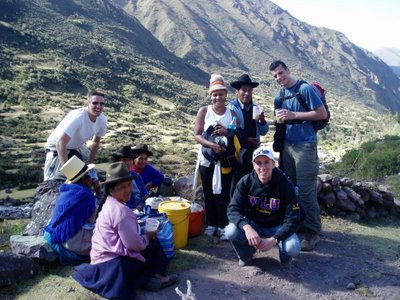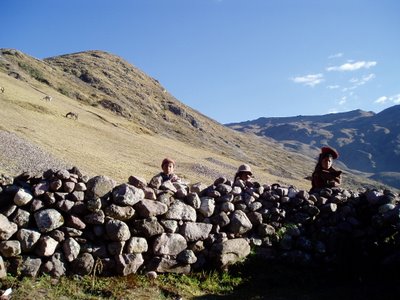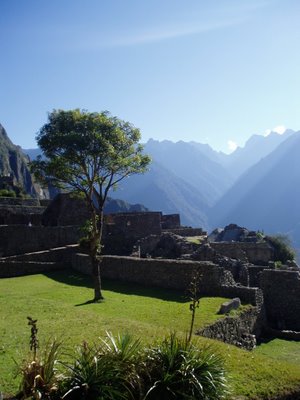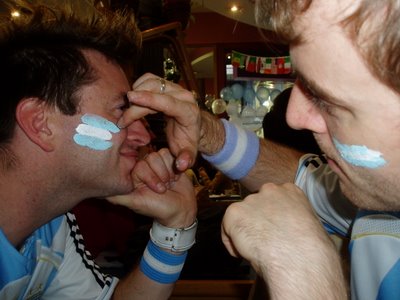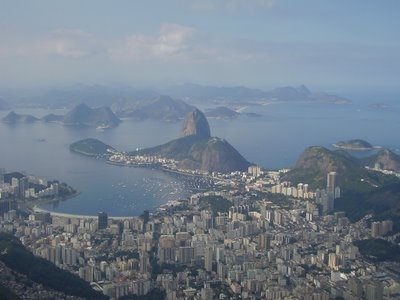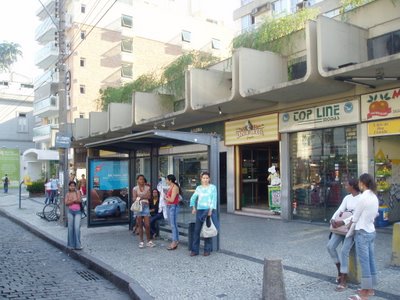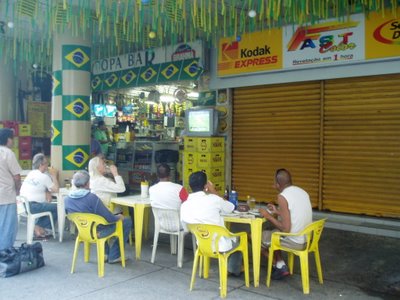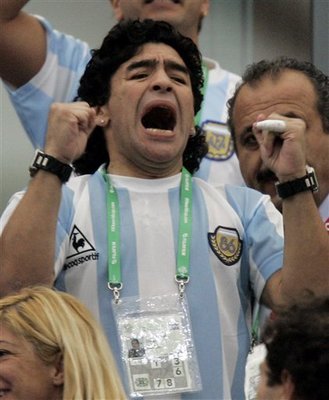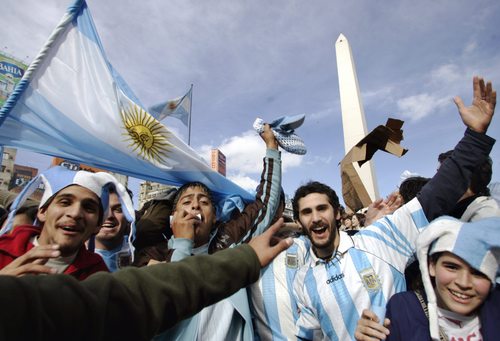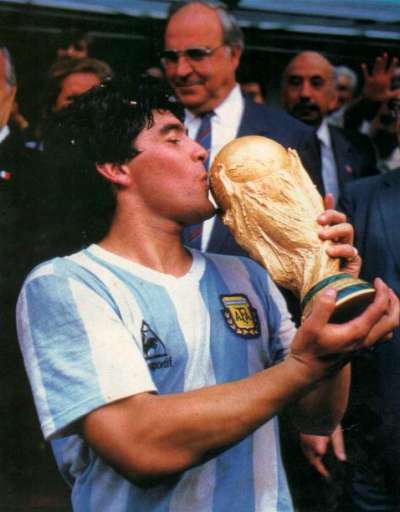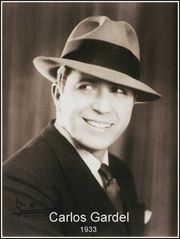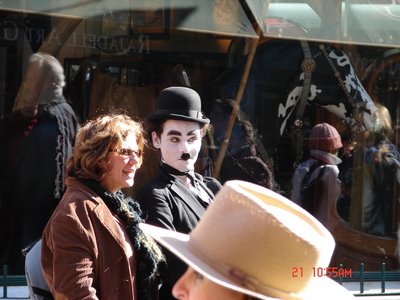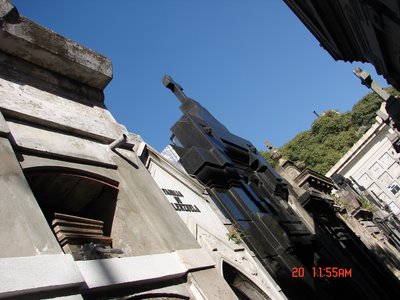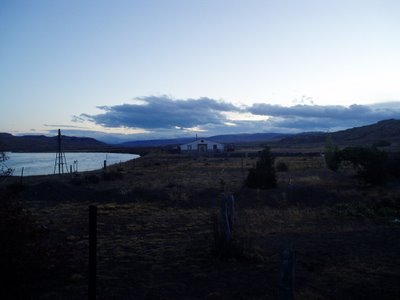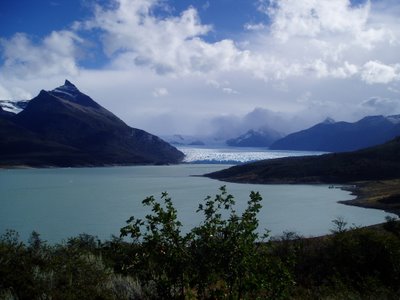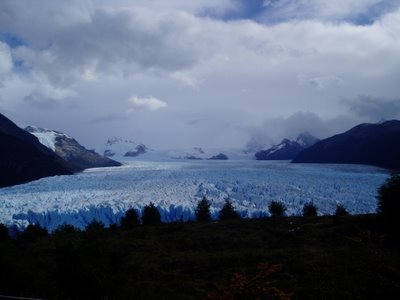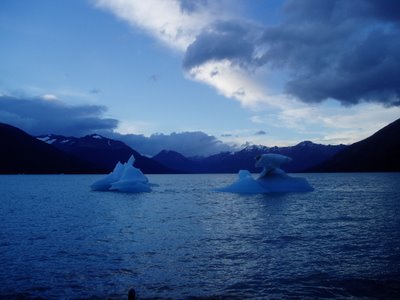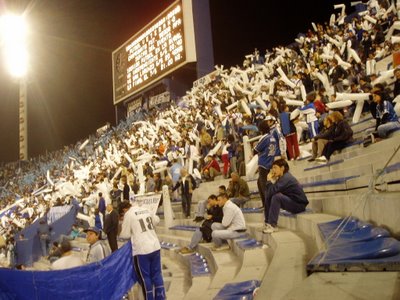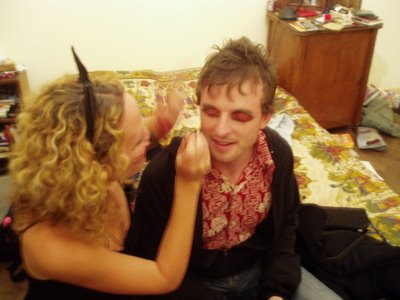At the very fringe of the Lake District - Patagonia's barren steppe gaping to the south - two hours from Bariloche (the favoured sojourn of
porteño socialites), El Bolsón rests between two ranges of mountains that run parallel like railroad tracks down the continent. The town became famous in the 70's as a hippy hangout, and while its founding spirit has since been mostly paved over with the inevitable commercial imperatives, El Bolsón still offers some opportunity for an alternative lifestyle. Every other day a craft fair springs up in the Plaza San Martin, with plenty of homemade trinkets, toys, and clothes on sale, as well as waffles and veggie
empanadas. This is probably the only town in Argentina in which it's difficult to get a bottle of
Quilmes; most restaurants stock only their
cerveza casera, which is home-brewed beer. What's more, numerous organic farms and occasional communes have settled in the outskirts of town, so the souvenir shops and overpriced bistros haven't completely denied El Bolsón its hippy cred.
In my first few days in El Bolsón I was finally able to get up in the mountains, and took on a 3-day hike. The trails in the area were well-suited to a hiker with my profile (capable but lacking equipment), as the mountains are dotted with
refugios, which are cabins where hikers can eat, sleep, and have a little
mate. The first day was tough: a 5.5-hour ascent from the mountain's valley to nearly its peak, covering about 1.2 vertical kilometres, done in just enough rain to make the trail slippery. I made it by the late afternoon though, and was greeted by the first of two spectacular
refugios: this one nestled in a lush valley overlooked by the
Cerro (peak)
Hielo Azul, neighbour of both the valley's forest and its river, a river that flows from the glacier at the mountain's peak right down the pitch I had climbed to the river I had crossed at the mountain's base. The
refugio was simply a two-floor cabin, the downstairs housing the eating and sitting areas, the upstairs one big room where up to 40 guests could pick out their spot on the floor, throw down a mattress, and sleep. It was hardly private, but naturally no one had any difficulty nodding off.
The next day was comprised of two legs: a return trip to the
Cerro Hielo Azul, and then onto the next
refugio, the
Refugio Cajon de Azul. The
cerro topped out at 2270m, which isn't especially high in absolute terms, but it was a long way up from where I had started and from the
refugio. The glacier and glacial lake were a little disappointing, but the views along the way more than repaid the considerable effort required for the climb. After a brief break, I set off for the next
refugio, and arrived about five hours later, though at least this time there wasn't much climbing left to do.
The
Refugio Cajon de Azul, in contrast with the
Hielo Azul's awesome setting, was more of a ranch where
gaucho types took in hikers to support their horse rearing and daily steak
asados. While this
refugio was a little bigger and more elaborate, the use of space was similarly devoted either to food preparation, food consumption, or sleeping. We had a sociable evening - thanks, no doubt, to the ample supply of
cerveza casera and
vino casero - followed by a shorter walk out the next day. Since the weather was so nice, we decided to spend much of the day milling around, planning to catch the 5:30pm bus back to town from the trail's base instead of the more popular 1:30pm. After a relaxing morning and a beautiful hike out, we arrived at the bus stop promptly at 5:40pm, and hailed a cab. Good finish.
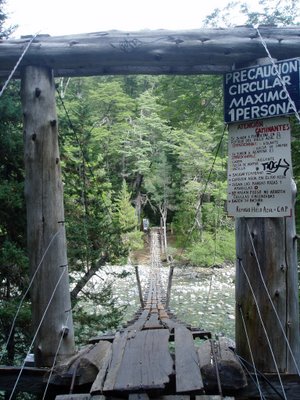
The bridge over the Rio Azul where the trail commences. It was a little on the rickety side; somewhere in between complete confidence and Temple of Doom.
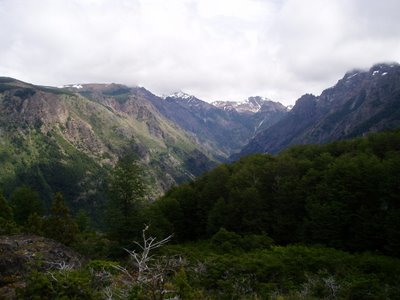
A little ways up on Day 1.

The view from the Cerro Hielo Azul, overlooking the valley in which the refugio is set.
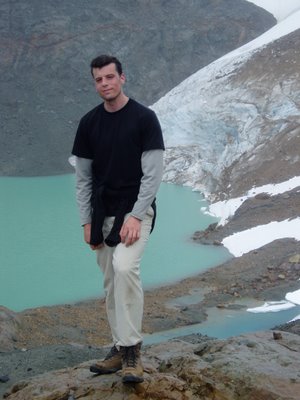
Me at the cerro, with the glacier and glacial lake in the background.
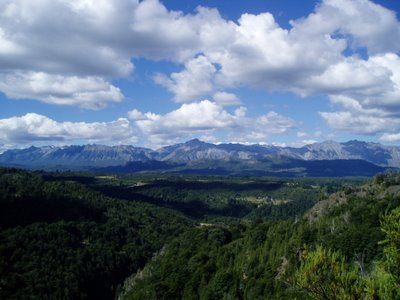
View of the valley on Day 3. El Bolsón is a little ways off to the side, out of the picture.
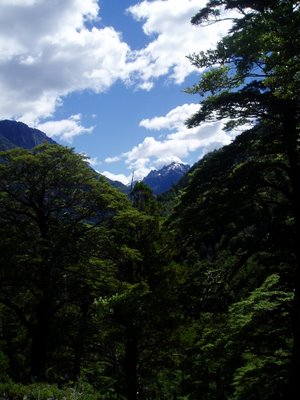
Another look from Day 3. So very nice.
Upon my return I decided to settle down in El Bolsón for a little while, as I had made some friends on the hike who were around for a few days. I had found an interesting place to stay: the
Chacra el Cielo, which my friend from Junin de los Andes had recommended.
El Cielo is run by Rosa and Nano, the former an ex-pat from Pennsylvania, the latter pure Argentine. Rosa had wanted a farm, but didn't think highly of her prospects in the U.S., and Nano had a farm, but needed some help. At some point they met, saw the compatibility of their situations, and promptly got married, despite barely knowing one another. Their son Dante turned three when I was there, and Rosa and Nano seemed quite happy. Theirs was neither the first nor the last marriage-for-citizenship arrangement that I would encounter in Argentina.
Chaca el Cielo is an organic farm about an hour's walk outside of El Bolsón, the last twenty minutes of which is right uphill, so if I hadn't found my hiking legs after my first trip, I certainly had by the time I left. Guests staying at
El Cielo had a choice of how to pay for their accommodation: $10 pesos ($4 CAD) a night, or four hours of work around the farm. At first I took a capitalist approach to the decision, and confident that my labour was worth more than a dollar an hour, I just paid. Later I came around to a socialist perspective, and thought it would be fair if we all pitched in to help, and all shared in the benefits. Before I got around to actually getting in some work, though, my laziness overcame both ideologies, and I decided that I'd rather just hang out. I spent about a week at
El Cielo, occupied mostly by making trips into town and studying Spanish.
I went on one additional hike; a day-trip to the top of the
Cerro Piltiquitron, a little less than 15km each way from
El Cielo, covering about 1400m in elevation. No pictures from that one, as my view was often blocked by clouds, especially as I reached the
cumbre (summit). What made it worthwhile was my first run-in with the famously volatile Patagonian weather: as I neared the top, the weather shifted from a typical grey day, to a light drizzle, to very high winds, to hail and heavy clouds, all in about twenty minutes. This all caught me a little off-guard, and I was still in my shorts, though at least I had my MEC raincoat on at this point, which held up admirably. Just as quickly as it had started, the weather dissipated as I crossed over a ridge, and I could see more than 10m in front of me, and walk without having to fear getting knocked over by gale-force winds. The Patagonian winds really are legendary; one reads stories of car doors being blown off, and more than one veteran of the
Torres del Paine hike in southern Chile has reported seeing people literally blown off their feet. So I got off all right.
A week to the day after arriving at
El Cielo, I said my goodbyes to Rosa, Nano, and Dante, and hopped the 5:00pm bus to the south. El Bolsón isn't even in Patagonia proper, really, and I was eager to get on the road; that travel itch again that sent me down there in the first place. I would arrive at my next destination - more than 48 hours later - desperate to settle down somewhere for even just a few days. Such is the effect of crossing the vast and empty steppe that runs from the 39th parallel to "the end of the world"; remembered by travel writer Bruce Chatwin as the safest place to be in the event of nuclear attack; largely uninhabitable and nearly uninhabited; barren and flat and unknowable. Patagonia.

A cute little farm near where I first stayed in El Bolsón.

"Yo soy la vida" means "I am the life". Apparently there was some confusion about just who the subject is in that clause. Nice spot for some religion regardless. Evangelicals are very rare in Argentina, a country that is 92% Roman Catholic.
